
Indiana Jones and the Last Crusade: The Graphic Adventure is a graphic adventure game, released in 1989 by Lucasfilm Games, coinciding with the release of the film of the same name. It was the third game to use the SCUMM engine.

Shadow of the Beast is a platform game developed by Reflections and published by Psygnosis in 1989. The original version was released for the Amiga, and was later ported to many other systems. The game was known for its graphics, with many colours on screen and up to twelve levels of parallax scrolling backdrops, and for its atmospheric score composed by David Whittaker that used high-quality instrument samples.

Deluxe Paint, often referred to as DPaint, is a bitmap graphics editor created by Dan Silva for Electronic Arts and published for the then-new Amiga 1000 in November 1985. A series of updated versions followed, some of which were ported to other platforms. An MS-DOS release with support for the 256 color VGA standard became popular for creating pixel graphics in video games in the 1990s.
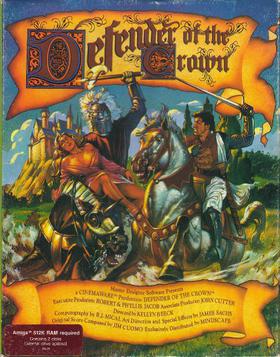
Defender of the Crown is a strategy video game designed by Kellyn Beeck. It was Cinemaware's first game, and was originally released for the Commodore Amiga in 1986, setting a new standard for graphic quality in home computer games.
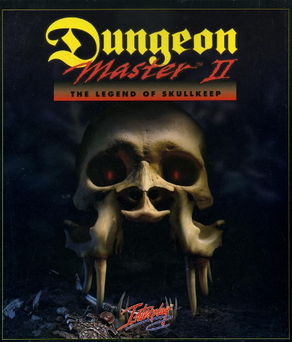
Dungeon Master II: The Legend of Skullkeep, also released as Dungeon Master II: Skullkeep, is the sequel to the dungeon crawler role-playing video game Dungeon Master. It was released in 1993 in Japan and in 1995 in other countries. It is available for DOS, Amiga, Macintosh, Sega CD, PC-9801, PC-9821, and FM Towns. A Sega Mega Drive version was planned but never released.
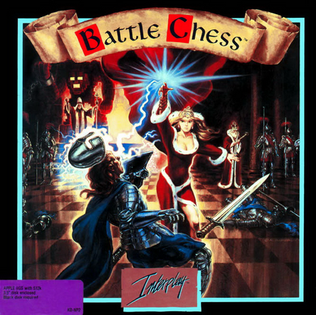
Battle Chess is a video game version of chess with 2.5D graphics and fighting animations showing the result of one piece moving onto the square of another. It was developed and released by Interplay Entertainment for the Amiga in 1988 and ported to many other systems, including the 3DO Interactive Multiplayer, Acorn Archimedes, Amiga CD32, Amiga CDTV, Apple IIGS, Apple II, Atari ST, Commodore 64, MS-DOS, FM Towns, Nintendo Entertainment System, MacOS, PC-98, X68000, and Microsoft Windows. In 1991, Battle Chess Enhanced was released by Interplay for IBM PC compatibles and Macintosh with improved VGA graphics and a symphonic musical score played from the CD-ROM.
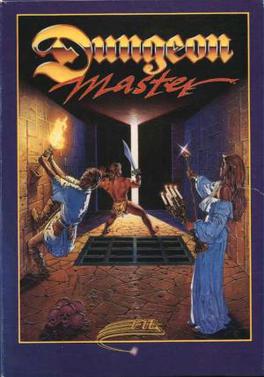
Dungeon Master is a role-playing video game featuring a pseudo-3D first-person perspective. It was developed and published by FTL Games for the Atari ST in 1987, almost identical Amiga and PC (DOS) ports following in 1988 and 1992.

Stunts is a 3D racing video game developed by Distinctive Software and published by Broderbund in 1990. The game places emphasis on racing on stunt tracks and features a track editor. It is clearly influenced by the earlier arcade game Hard Drivin' and has many similar elements to the game Stunt Driver which was released the same year. The game is part of the 4D Sports series along with 4D Sports Tennis and 4D Sports Boxing.

Cinemaware was a video game developer and publisher. It had released several titles in the 1980s based on various film themes. The company was resurrected in 2000, before being acquired by eGames in 2005.

Syndicate is an isometric real-time tactical and strategic game from Bullfrog Productions created in 1993, and released for a variety of platforms beginning with the PC and Commodore Amiga. It is the first title in the Syndicate series. Set in a dystopian future in which corporations have replaced governments, Syndicate puts the player in control of a corporation vying for global dominance.
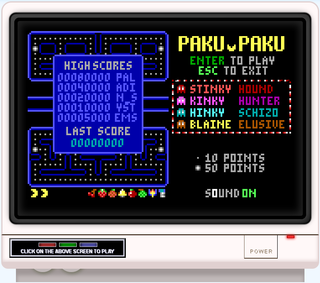
A personal computer game, also known as computer game or abbreviated PC game, is an electronic game played on a personal computer (PC) and form of video game. They are defined by the open platform nature of PC systems.

One on One: Dr. J vs. Larry Bird, commonly known as One on One, is a basketball video game written by Eric Hammond for the Apple II and published by Electronic Arts in 1983. It was initially ported to the Atari 8-bit family, ColecoVision, Commodore 64, and IBM PC. Versions followed for the TRS-80 Color Computer, Macintosh, Amiga, and ZX Spectrum. In Europe, the publisher was Ariolasoft. Atari Corporation released an Atari 7800 port in 1987.
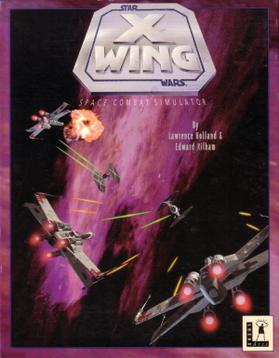
Star Wars: X-Wing is a space simulation video game, the first of the X-Wing combat flight simulation games series. The player's character flies starfighters, including the X-wing, for the Rebel Alliance. The narrative precedes and parallels the events of Star Wars Episode IV: A New Hope.

The Faery Tale Adventure is a 1987 action role-playing video game designed by David Joiner and published by MicroIllusions for the Amiga, and later ported to the Commodore 64, MS-DOS, and Sega Genesis. The MS-DOS version is titled The Faery Tale Adventure: Book I. Microillusions also released a "Book 1" version for the Amiga which was going to be the start of a series of games, according to Talin, but bankruptcy prevented it. The initial version was produced for the Amiga 1000 and featured the largest game world to that date. A sequel, Faery Tale Adventure II: Halls of the Dead, was released in 1997.

PGA Tour Golf is a golf video game and the first in the PGA Tour game series. It was developed by Sterling Silver Software and released in 1990, for MS-DOS. It was initially published by Electronic Arts, which subsequently released versions of the game for Sega Genesis and Amiga in 1991, followed by a version for the SNES in 1992. By 1994, Tengen had published versions for Sega's Master System and Game Gear consoles. PGA Tour Golf received generally positive reviews for its realism, sound, and camera. Several critics considered the computer versions to be the best golf game available at the time of its release. It was followed by PGA Tour Golf II.
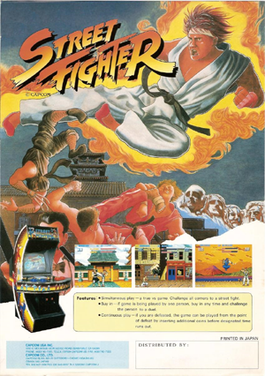
Street Fighter is a 1987 arcade game by Japanese developer and publisher Capcom. It is the first competitive fighting game produced by the company and the first installment in the Street Fighter series. It was a commercial success in arcades and introduced special attacks and some of the conventions made standard in later fighting games, such as the six-button controls and the use of command-based special moves.
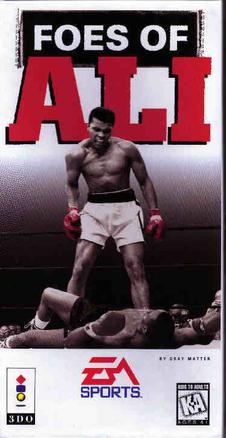
Foes of Ali is a boxing video game that was developed by Gray Matter and published by EA Sports in 1995. It was released exclusively for the 3DO Interactive Multiplayer console. It was one of the first boxing games to render matches using 3D graphics. Thus, boxers in the game could be shown to move 360 degrees around the ring in a more convincing fashion than had previously been possible using 2D sprites. The gameplay bears many similarities to that featured in 4D Sports Boxing.

Evander Holyfield's "Real Deal" Boxing is a boxing video game that was developed by ACME Interactive and published by Sega in 1992, released for the Mega Drive/Genesis and Game Gear consoles. It was followed by a sequel in 1993, Greatest Heavyweights, which featured a number of improvements.

Falcon is a combat flight simulator video game and the first official entry in the Falcon series of the F-16 jet fighter's simulators by Spectrum HoloByte. Originally developed by Sphere for Macintosh and MS-DOS in 1987 and ported to several platforms between 1988 and 1992, the game earned commercial success and critical acclaim.
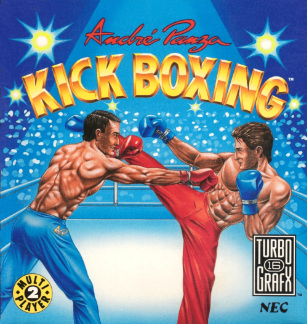
Panza Kick Boxing is a French fighting video game developed by Futura and originally published by Loriciels in 1991. The game is a video game adaptation of Thai kick boxing. It received high critical praise particularly for its graphics and gameplay while receiving minor criticism for its repetitiveness. A sequel with various names to distance from the Panza endorsement, including Best of the Best: Championship Karate in the United States, was released a few years later.





















